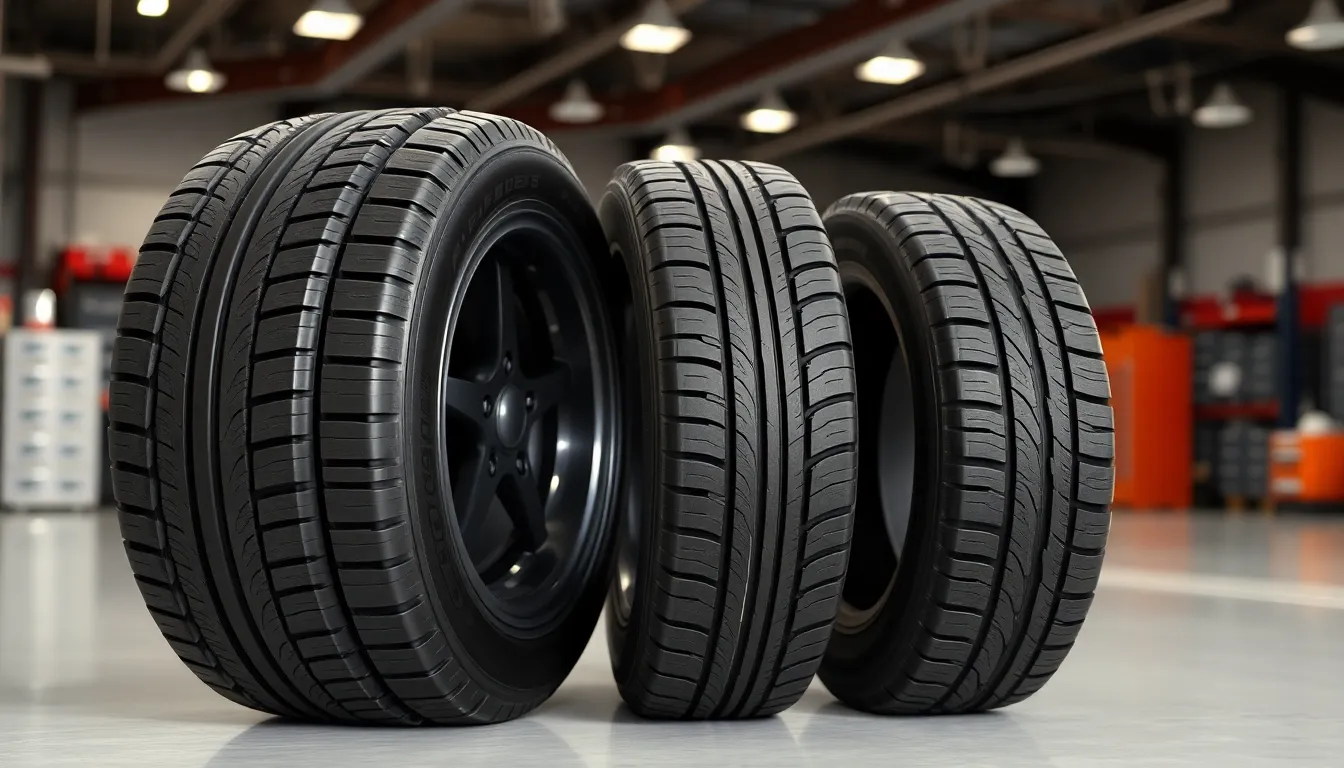We’ve all seen those sleek sports cars gripping corners with incredible precision and wondered what gives them that edge. The secret often lies beneath the surface – in asymmetrical tires that most drivers don’t even know exist. These engineering marvels aren’t just another marketing gimmick; they’re revolutionizing how we think about tire performance and safety.
Unlike traditional symmetrical tires that look identical on both sides, asymmetrical tires feature distinctly different tread patterns designed for exact functions. One side tackles water evacuation and wet-weather grip while the other maximizes dry performance and cornering stability. This isn’t just about performance cars anymore – asymmetrical tires are becoming increasingly popular across all vehicle types.
Understanding asymmetrical tires could transform your driving experience and potentially save you money on replacements. We’ll explore everything from their unique design benefits to installation requirements and help you determine if they’re the right choice for your vehicle.
What Are Asymmetrical Tires
Asymmetrical tires feature distinct tread patterns on their inner and outer sidewalls designed for different performance functions. These specialized tires divide the contact patch into two zones, with each side engineered to handle exact driving conditions and road surfaces.
The outer portion of asymmetrical tires contains larger tread blocks and stiffer rubber compounds that maximize dry weather grip during cornering and high-speed maneuvers. These larger blocks reduce tread squirm and maintain consistent contact with the road surface when drivers navigate curves or make sudden directional changes.
The inner section incorporates smaller tread blocks with deeper grooves and channels that excel at water evacuation and wet weather traction. This design prevents hydroplaning by channeling water away from the tire’s footprint, while the smaller blocks provide enhanced grip on wet pavement.
Modern asymmetrical tire construction differs significantly from conventional symmetrical designs where the same tread pattern spans the entire tire width. Manufacturers like Michelin, Continental, and Bridgestone engineer these tires using computer modeling to optimize the performance characteristics of each sidewall section.
We identify asymmetrical tires by examining the sidewall markings that indicate “OUTSIDE” or “INSIDE” positioning requirements. These markings ensure proper installation since mounting the tire incorrectly negates the performance benefits of the specialized tread design.
The asymmetrical construction allows tire engineers to fine-tune exact performance attributes without compromising overall tire balance. This approach enables manufacturers to create tires that deliver superior wet weather safety while maintaining excellent dry road handling characteristics that drivers expect from high-performance vehicles.
How Asymmetrical Tires Work
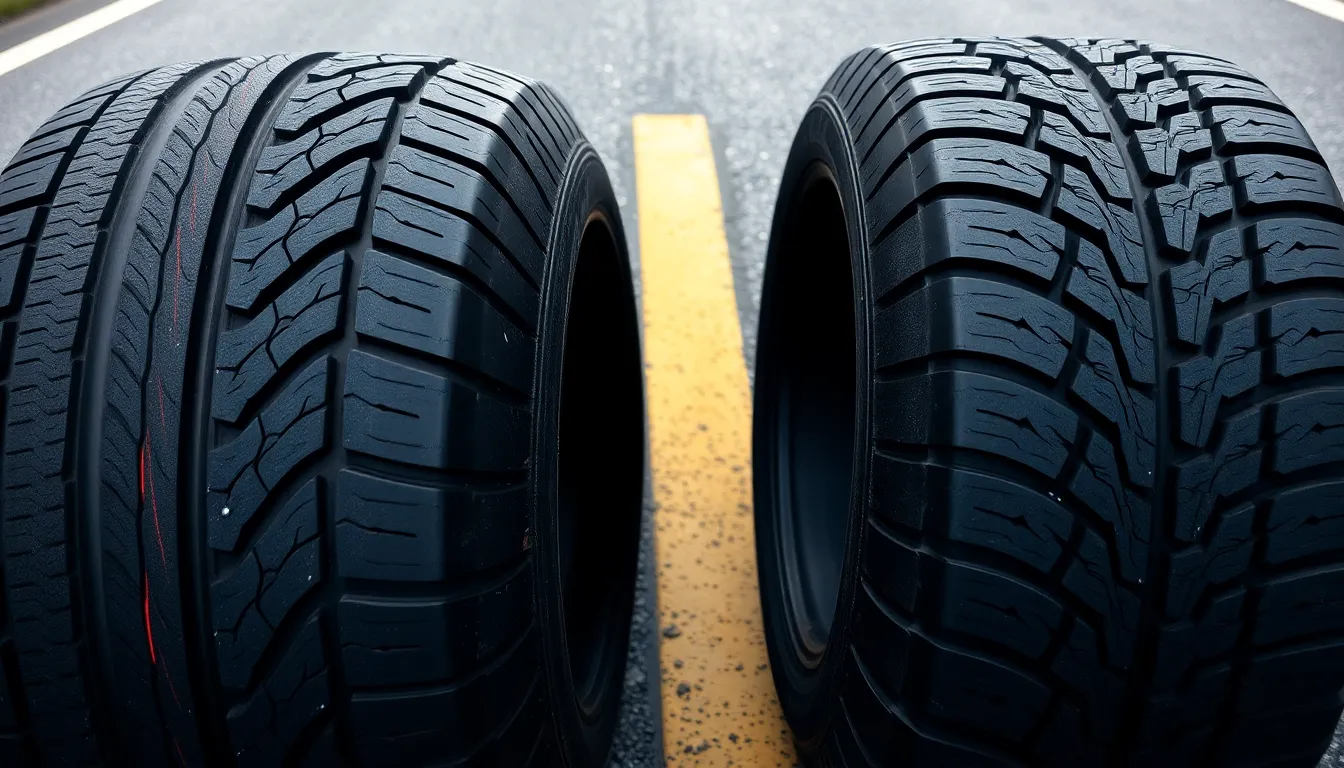
Asymmetrical tires operate through specialized tread design that divides the contact patch into distinct performance zones. Each zone targets exact driving conditions while maintaining overall tire balance and stability.
Tread Pattern Design
The inner tread focuses exclusively on water displacement and hydroplaning resistance. Smaller tread blocks with deeper grooves channel water away from the contact patch, ensuring better grip in wet conditions. Engineers design these patterns to maximize water evacuation while maintaining structural integrity.
Larger, more rigid tread blocks dominate the outer section of asymmetrical tires. These blocks provide high lateral stiffness that enhances cornering stability and dry grip performance. The outer pattern creates a firmer contact patch that resists deformation during aggressive maneuvering.
Computer modeling allows manufacturers like Michelin, Continental, and Bridgestone to optimize each zone’s performance characteristics. The asymmetric design enables fine-tuning of exact attributes without compromising overall tire balance or uniformity.
Performance Benefits
Enhanced controllability emerges as the primary advantage of asymmetrical tire design. The specialized zones provide better maneuverability and stability, particularly during cornering situations where tire performance becomes critical.
Better maneuvering stability on dry surfaces results from the rigid outer tread blocks. These blocks maintain their shape under lateral forces, delivering consistent grip and predictable handling characteristics during high-performance driving scenarios.
Increased wet weather traction comes from the inner tread’s water displacement capabilities. The specialized grooves reduce hydroplaning risk and improve grip when road surfaces become slippery or waterlogged.
High curve stability makes asymmetrical tires suitable for performance applications. The combination of wet and dry optimization creates superior grip and stability during cornering, allowing drivers to maintain control across varying road conditions.
Asymmetrical vs Directional vs Symmetrical Tires
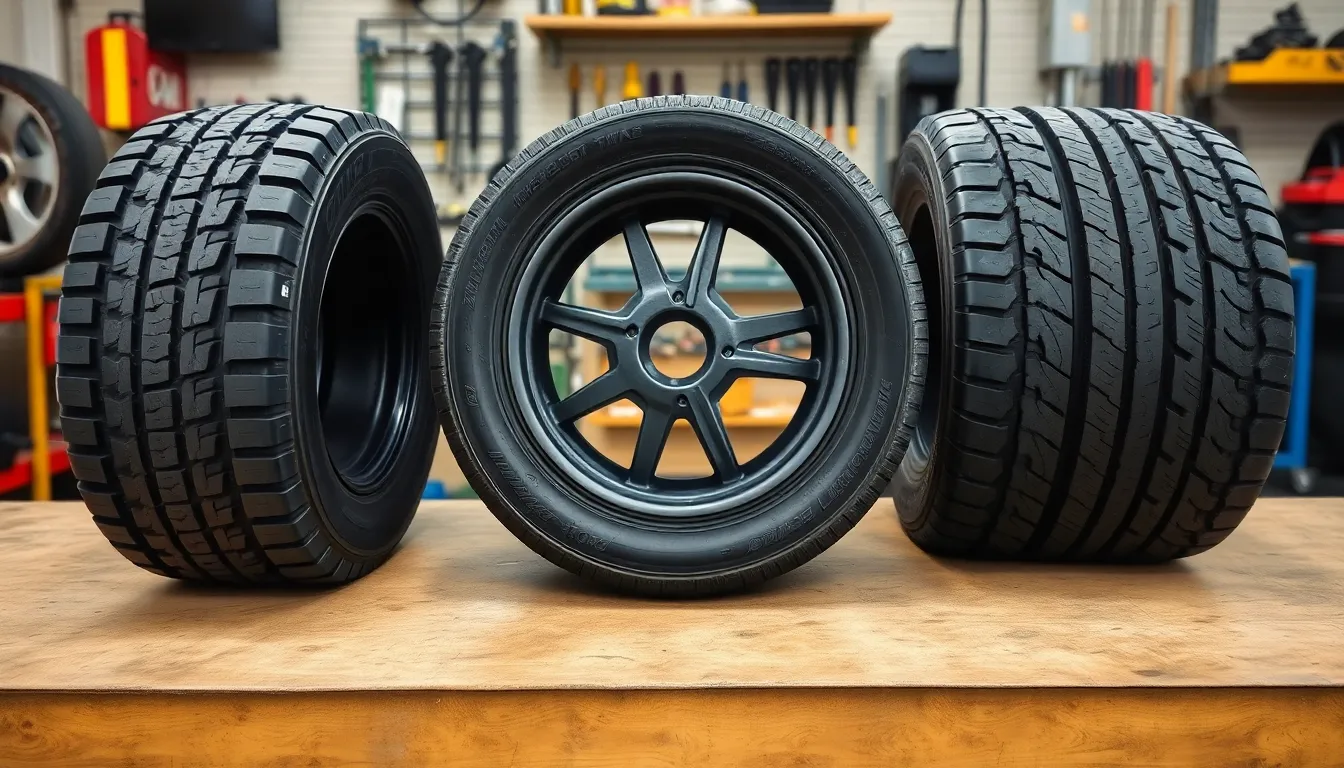
Understanding the fundamental differences between asymmetrical, directional, and symmetrical tire designs helps drivers make informed decisions about their vehicle’s performance needs. Each tire type offers distinct advantages based on exact driving conditions and performance requirements.
Key Differences
Asymmetrical tires feature different tread patterns on their inner and outer sections, with specialized zones optimizing both wet and dry performance conditions. The design incorporates larger tread blocks on the outside for enhanced dry cornering stability and smaller blocks with deeper grooves on the inside for superior water evacuation.
Directional tires use a V-shaped tread pattern that points in one exact direction, maximizing wet traction and cornering capabilities through enhanced water channeling. These tires can only rotate from front to back positions, never side to side, maintaining their designated rolling direction throughout their service life.
Symmetrical tires display identical tread patterns on both sides, providing even wear characteristics and quiet operation across all driving conditions. The uniform design allows flexible rotation patterns, extending tire life through various mounting configurations.
| Tire Type | Tread Pattern | Rotation Options | Primary Advantage |
|---|---|---|---|
| Asymmetrical | Different inner/outer patterns | Front to back only | Wet and dry optimization |
| Directional | V-shaped unidirectional | Front to back only | Enhanced wet traction |
| Symmetrical | Identical both sides | All rotation patterns | Even wear and quiet performance |
When to Choose Each Type
Asymmetrical tires excel for vehicles requiring high performance across varied weather conditions, particularly sports cars and vehicles frequently encountering wet and wintry driving environments. These tires suit drivers prioritizing both wet weather safety and dry road performance without compromising either capability.
Directional tires serve high-performance vehicles that prioritize wet traction and aggressive cornering, making them ideal for racing applications and sports driving scenarios. Performance enthusiasts benefit from the enhanced wet weather capabilities and superior cornering response these tires provide.
Symmetrical tires work best for drivers seeking quiet, smooth performance with extended tire life, making them suitable for most everyday driving conditions. Commuters and family vehicle owners appreciate the versatility in rotation patterns and consistent wear characteristics that maximize tire longevity.
Best Asymmetrical Tire Brands and Models

Choosing the right asymmetrical tire brand involves balancing performance capabilities with your budget constraints. We’ve categorized top manufacturers into premium and budget categories to help you find the perfect match for your driving requirements.
Premium Options
Michelin leads the premium asymmetrical tire market with their Pilot Sport series, delivering exceptional dry and wet traction performance. Continental’s SportContact series provides superior handling characteristics and cornering stability that performance enthusiasts demand. Pirelli offers the Cinturato P7 series, which combines high performance capabilities with enhanced comfort features for daily driving.
These premium brands use advanced rubber compounds and sophisticated tread designs that maximize grip across diverse weather conditions. Engineering innovations from these manufacturers often set industry standards that other tire producers follow years later.
Budget-Friendly Choices
Goodyear’s Eagle F1 series strikes an optimal balance between performance capabilities and affordability, making high-quality asymmetrical tires accessible to more drivers. Nokian’s zLine series delivers impressive wet and dry handling performance without the premium price tag that typically accompanies such capabilities. Hankook produces the Ventus series, which excels in various weather conditions while maintaining budget-conscious pricing.
Budget options provide 70-80% of premium tire performance at significantly lower costs, making them ideal for drivers who want asymmetrical tire benefits without maximum expense. These manufacturers focus on proven technologies and efficient production methods to deliver reliable performance at competitive prices.
Installation and Maintenance Considerations
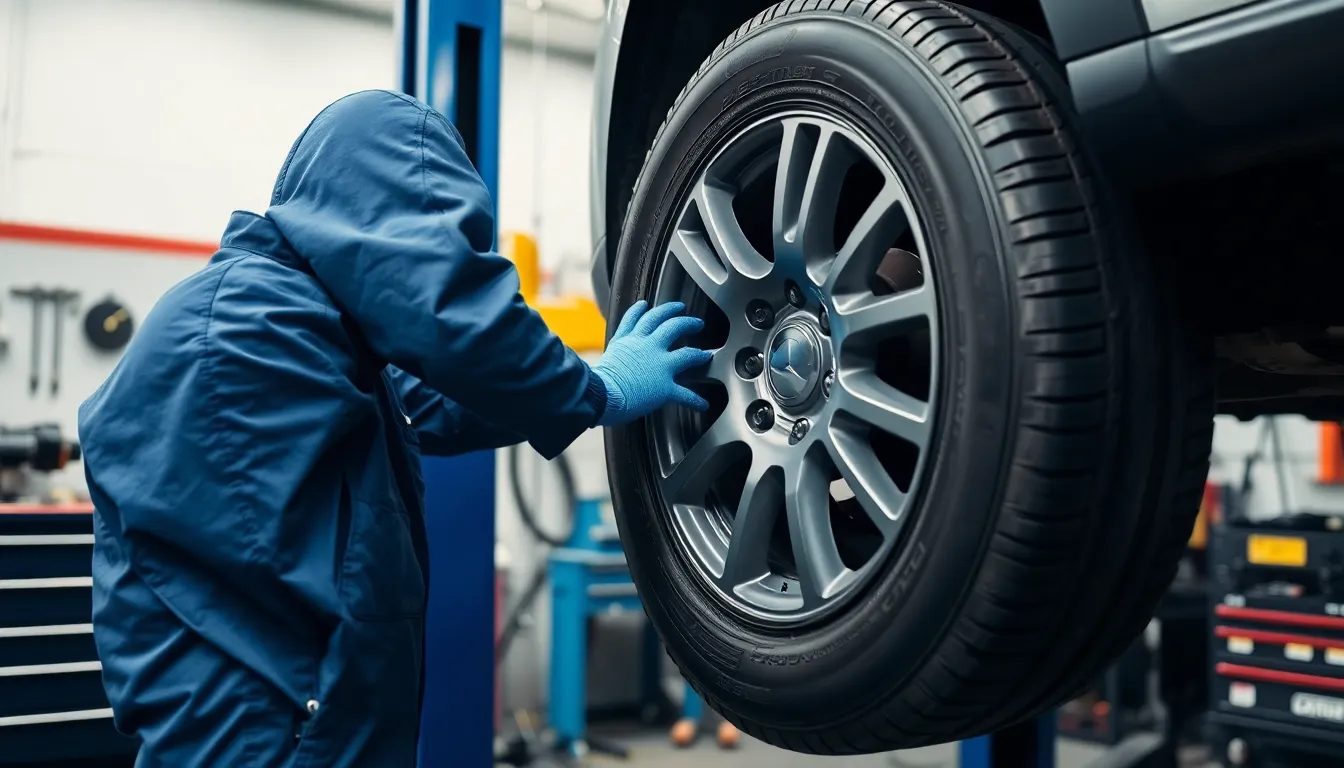
Installation requires visual inspection of each tire for manufacturing markings before mounting. These markings ensure optimal performance and prevent premature wear when asymmetrical tires are correctly positioned.
Proper Mounting Techniques
We identify the correct mounting orientation by locating sidewall markings such as “this side out” or “outside” on each tire. The side marked “outside” faces away from the vehicle during installation. Manufacturer instructions on the tire itself provide mounting guidance for exact models.
Incorrect installation reduces performance and increases wear patterns across the tread surface. Asymmetrical tires don’t require exact rotational direction markings like directional tires. Dismounting and remounting becomes necessary when a tire is installed with the wrong side facing outward.
Consulting the tire manufacturer’s exact instructions ensures proper orientation for each asymmetrical tire model. Professional installation prevents mounting errors that compromise the specialized tread design benefits.
Rotation Patterns
We recommend front-to-back rotation on the same side of the vehicle for asymmetrical tires. This pattern maintains optimal tread orientation while promoting even wear across all four tires.
| Rotation Type | Asymmetrical Tire Compatibility | Performance Impact |
|---|---|---|
| Front-to-back (same side) | Recommended | Maintains tread optimization |
| Diagonal (cross) rotation | Not recommended | Compromises handling |
| Side-to-side rotation | Not recommended | May reduce safety |
Diagonal or side-to-side rotation compromises handling and safety by disrupting the specialized tread pattern orientation. Vehicle owner’s manual recommendations specify rotation frequency for exact makes and models.
Monthly inspections detect uneven wear patterns and damage between rotation intervals. Tracking rotation dates and maintenance activities in a log helps maximize tire longevity and performance consistency.
Performance in Different Driving Conditions

Asymmetrical tires excel across varied weather conditions through their specialized dual-zone tread design. Each zone targets exact performance requirements that enhance driving safety and control throughout the year.
Dry Weather Performance
The outer tread section of asymmetrical tires delivers exceptional dry pavement grip through larger, more rigid tread blocks. Enhanced cornering stability emerges from this design, providing precise steering response during aggressive turns and high-speed maneuvers. Performance-oriented drivers benefit from the confident handling characteristics that these tires offer on dry roads. Everyday driving becomes more secure with the stable contact patch that maintains consistent grip during acceleration and braking. Racing applications often use this outer zone design for maximum lateral grip during competitive driving scenarios.
Wet Weather Handling
Water evacuation becomes highly efficient through the inner tread pattern’s specialized groove design. Smaller tread blocks with deeper channels focus on directing water away from the tire’s contact area, significantly reducing hydroplaning risks. Balanced braking capabilities result from this dual-pattern approach, allowing drivers to maintain control during sudden stops on wet surfaces. Traction remains consistent across both acceleration and cornering when roads become slippery from rain or surface moisture. Emergency maneuvers become safer as the inner zone’s water-channeling features prevent loss of contact with the road surface.
Winter Driving Capabilities
All-season performance surpasses both symmetrical and directional tire designs in moderate winter conditions. Limited effectiveness appears when temperatures drop below freezing or when encountering snow and ice accumulation. Better traction than standard designs occurs during light winter weather, though specialized winter tire compounds remain superior for harsh conditions. Drivers in severe winter climates often require dedicated winter tires with exact rubber formulations designed for icy surfaces. Multifunctional capabilities make asymmetrical tires suitable for regions with mild winter weather where extreme snow and ice rarely occur.
Cost Analysis and Value Proposition
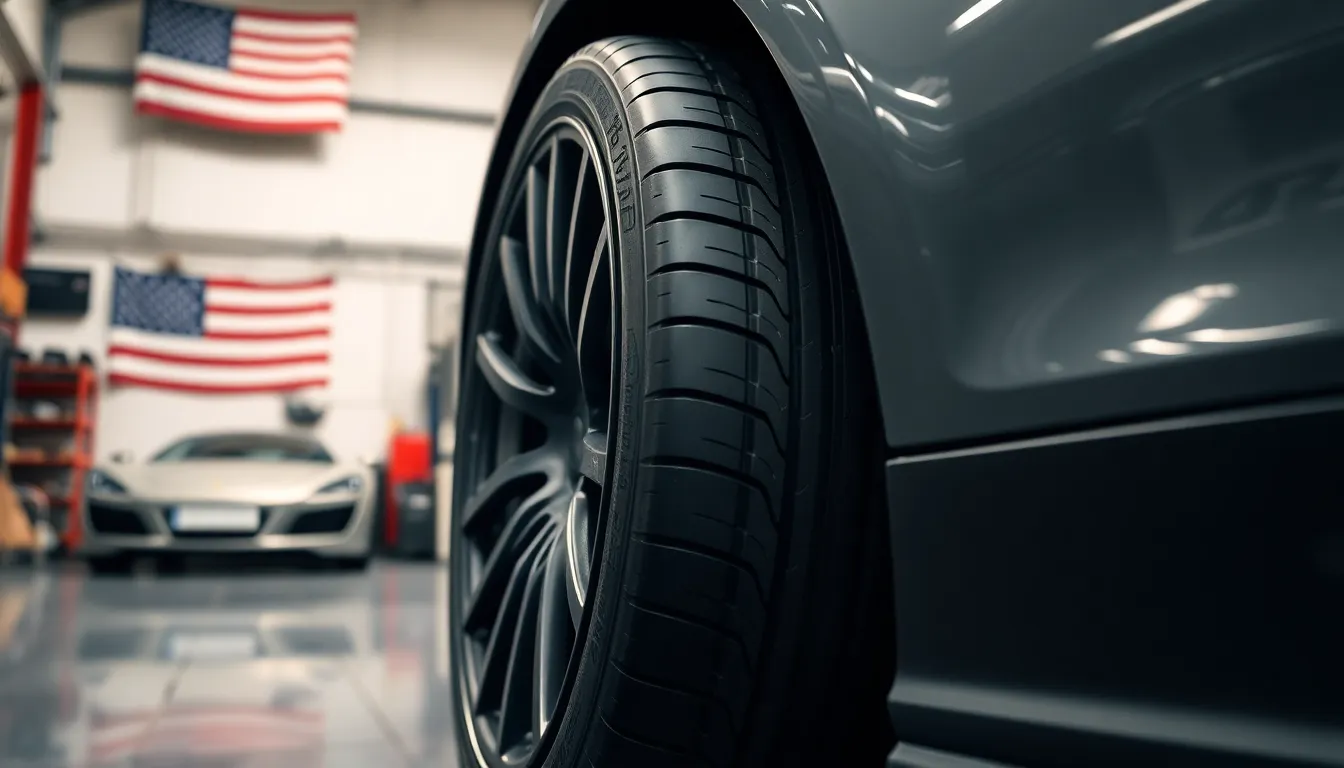
Initial Investment Considerations
Asymmetrical tires command premium pricing compared to symmetrical alternatives, typically ranging from $100 to over $200 per tire depending on brand and performance specifications. Manufacturing complexity drives these elevated costs as producers must engineer intricate dual tread patterns that optimize both wet and dry performance zones. Performance-focused designs require advanced rubber compounds and precise molding techniques that increase production expenses.
Installation and Maintenance Expenses
Proper mounting demands careful attention to sidewall orientation markings, as incorrect installation degrades traction capabilities and performance benefits. Specialized installation procedures add minimal labor costs but prove essential for maximizing tire effectiveness. Rotation limitations present ongoing maintenance considerations since asymmetrical tires can’t rotate as freely as symmetrical designs, potentially affecting long-term wear patterns.
| Cost Factor | Impact | Range |
|---|---|---|
| Initial Purchase | Higher than symmetrical | $100-$200+ per tire |
| Installation | Specialized mounting required | Minimal additional cost |
| Rotation Limitations | Restricted patterns | Front-to-back same side only |
| Alignment Services | Recommended for longevity | Standard alignment pricing |
Performance Value Returns
Enhanced wet and dry traction capabilities justify premium pricing for drivers prioritizing safety and handling performance. Superior cornering stability and hydroplaning resistance deliver measurable safety benefits that offset higher initial investments. Improved controllability provides tangible driving advantages particularly valuable for performance vehicle applications.
Long-term Economic Benefits
Proper maintenance aligned with manufacturer specifications extends tire lifespan even though rotation restrictions, helping offset initial cost premiums. Regular alignment services prevent premature uneven wear patterns that could necessitate early replacement. Strategic tire selection for exact driving conditions maximizes performance value while maintaining cost effectiveness over the tire’s service life.
Market Positioning Analysis
Premium brands like Michelin, Continental and Bridgestone offer advanced asymmetrical designs targeting performance-focused consumers willing to invest in superior capabilities. Budget alternatives from manufacturers like Goodyear and Hankook provide 70-80% of premium performance at more accessible price points. Performance benefits versus cost considerations make asymmetrical tires strategically valuable for drivers requiring enhanced traction and handling in variable weather conditions.
Common Myths and Misconceptions

Several persistent myths surround asymmetrical tires that prevent drivers from making informed purchasing decisions. We’ve identified four primary misconceptions that automotive industry data consistently contradicts.
Asymmetrical Tires Are Only for High-Performance Vehicles
Many drivers believe asymmetrical tires exclusively benefit sports cars and high-performance vehicles. Tire manufacturers produce asymmetrical designs for passenger cars across all market segments, from compact sedans to family SUVs. Modern asymmetrical treads balance wet and dry performance characteristics that enhance daily driving safety regardless of vehicle type. Consumer tire sales data shows asymmetrical patterns now represent over 40% of all tire purchases, including mainstream vehicle applications.
Rotation Limitations Make Maintenance Complicated
Another widespread misconception suggests asymmetrical tires cannot rotate like conventional designs. These tires rotate effectively when technicians maintain proper orientation during remounting procedures. The key requirement involves keeping the “OUTSIDE” marking facing outward, while tires can move between front and rear positions on the same vehicle side. Professional installation shops handle this rotation pattern routinely without additional complexity or specialized equipment.
Noise and Comfort Performance Suffers
Drivers often assume asymmetrical tread patterns create excessive road noise or reduce ride comfort. Engineering advances in asymmetrical tire construction frequently incorporate noise-reducing features within the tread design itself. Manufacturers optimize rubber compounds and tread block arrangements to minimize vibration transmission while maintaining performance characteristics. Independent testing consistently demonstrates comparable or superior comfort levels compared to symmetrical alternatives in the same price category.
Special Installation Requirements Increase Costs
The final misconception involves believing asymmetrical tires require specialized installation procedures or maintenance protocols. Standard tire mounting equipment handles asymmetrical designs using identical processes as other tire types. Technicians simply follow sidewall markings for proper orientation, which adds no important time or cost to installation services. Maintenance schedules remain unchanged, with standard rotation intervals and pressure monitoring requirements applying across all asymmetrical tire applications.
Conclusion
Asymmetrical tires represent a important advancement in tire technology that we can’t ignore when making our next tire purchase. Their specialized design offers measurable benefits for both everyday drivers and performance enthusiasts who demand superior handling and safety.
We’ve seen how these tires deliver enhanced wet and dry performance through their innovative tread patterns making them a smart investment for most driving conditions. The proper installation and maintenance requirements aren’t complicated once we understand the basics.
Whether we choose premium brands for maximum performance or budget-friendly options for reliable everyday driving the value proposition remains strong. Asymmetrical tires prove that advanced engineering can deliver real-industry benefits that justify their cost through improved safety handling and overall driving experience.
Frequently Asked Questions
What are asymmetrical tires and how do they differ from regular tires?
Asymmetrical tires feature different tread patterns on their inner and outer sidewalls, unlike symmetrical tires with uniform patterns. The outer portion uses larger tread blocks for dry weather grip and cornering, while the inner section has smaller blocks with deeper grooves for wet traction and water evacuation.
How do asymmetrical tires improve driving performance?
Asymmetrical tires enhance performance by optimizing different zones for specific conditions. The outer zone maximizes dry weather grip during cornering, while the inner zone prevents hydroplaning through effective water channeling. This dual design provides superior controllability, stability, and grip across varying weather conditions.
Can asymmetrical tires be rotated like regular tires?
Asymmetrical tires cannot be rotated diagonally or side-to-side due to their directional design. They can only be rotated front-to-back on the same side of the vehicle. Proper rotation maintains the tread optimization and ensures continued performance benefits.
How do I know if asymmetrical tires are installed correctly?
Asymmetrical tires have clear sidewall markings indicating “OUTSIDE” or “INSIDE” positioning. During installation, ensure the “OUTSIDE” marking faces outward from the vehicle. Incorrect mounting negates the tire’s performance benefits, so visual inspection of these markings is crucial before mounting.
Are asymmetrical tires only for high-performance vehicles?
No, asymmetrical tires are designed for a wide range of passenger cars, not just high-performance vehicles. They benefit everyday drivers by providing improved wet and dry weather performance, better cornering stability, and enhanced safety across various driving conditions and vehicle types.
Do asymmetrical tires cost more than regular tires?
Yes, asymmetrical tires typically cost more due to advanced design and manufacturing complexity. However, they offer long-term value through improved performance, enhanced safety, and potentially longer lifespan when properly maintained. The premium pricing reflects superior engineering and performance capabilities.
Are asymmetrical tires good for winter driving?
Asymmetrical tires offer better all-season performance than symmetrical designs in moderate winter conditions. However, they’re not as effective as dedicated winter tires in severe winter weather. For areas with harsh winters, specialized winter tires remain the best choice for optimal safety and traction.
What are the best brands for asymmetrical tires?
Premium brands include Michelin, Continental, and Pirelli, known for exceptional performance capabilities. Budget-friendly options like Goodyear, Nokian, and Hankook provide reliable performance at more accessible prices. Choose based on your vehicle type, driving needs, and budget considerations.

